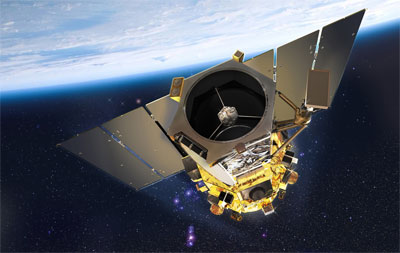A BASICally bad decisionby Thomas Snitch
|
| The core issue is why should the US government procure and purchase imagery satellites when commercially available imagery is readily available. |
The goal of the President’s Commercial Remote Sensing Policy of April 2003 is “to advance and protect U.S. national security and foreign policy interests by maintaining the nation’s leadership in remote sensing activities, and by sustaining and enhancing the U.S. remote sensing industry.”
To achieve these fundamental goals, the President’s policy states that the US government will:
Rely to the maximum practical extent on US commercial remote sensing space capabilities for filling the imagery and geospatial needs for military, intelligence, foreign policy, homeland security, and civil uses.
In addition, the policy will:
Focus the United States Government remote sensing space systems on meeting needs that can not [sic] be effectively, affordably, and reliably satisfied by commercial providers because of economic factors, civil mission needs, national security concerns, or foreign policy concerns.
The core issue is why should the US government procure and purchase imagery satellites when commercially available imagery is readily available. The commercial alternatives meet the collection requirements, they are cost affordable, they are more fiscally responsible than a government satellite buy, and they do not raise national security or foreign policy concerns.
As Defense Secretary Robert Gates recently said about the acquisition of refueling tanker aircraft, the US should consider and set the basic requirements and then choose the cheapest option. While military needs must be met, it is incumbent upon the government decision maker to give the taxpayers the best deal available. This is just solid stewardship of the public’s money. Why should decisions about remote sensing imagery collection be any different than the situation with refueling aircraft?
When the US needs to send American troops and material to the Middle East, the government does not go out into the marketplace and buy new airplanes or ocean freighters to move the equipment and personnel. This is because the US does not depend on a government-owned and government-operated (GO/GO) approach for moving all military assets. Rather, because the US only maintains limited capabilities in this regard, the government contracts with commercial airlines and commercial ships to move the soldiers and supplies into the theater.
That said, the US does maintain a special heavy airlift capability for circumstances that require a different approach and these capabilities must be maintained. However, for most transport concerns, the commercial sector provides these resources when needed.
This same approach should be applied to imagery collection. The US should, as stated in the President’s policy, rely on GeoEye and DigitalGlobe, or other commercial providers, for the preponderance of routine imagery needs. At the same time, the government should, and indeed must, maintain specialty imaging capabilities for special situations, just as is done in the transport arena.
Nevertheless, these very special intelligence requirements make up only a small percentage of total US government needs. These requirements should not be the primary driver for the BASIC plan to spend over $1.8 billion for two new satellites.
Several other key issues must be examined in this debate.
First, a recent study by the Center for Strategic and International Studies (CSIS) estimated that $30 billion is generated annually by the geospatial-related industry. The US Department of Labor has designed this sector as a fast growing and emerging industry. The Department of Labor has also suggested that future growth in the geospatial industry will be outside of federal government and increasing focused in the private sectors as well as with state and local governments.
This is a vibrant and growing sector of the US economy and of the American industrial base. The industry is creating employment opportunities, robust technology development, and sound economic investments in the United States.
Second, the global needs and demands for such information are growing by leaps and bounds and the majority of these new requirements have no military component.
| The US government should not be spending American taxpayer’s dollars on a program that can be accomplished with the same results at far less cost by the US commercial sector. |
This week in Glasgow, the UN will hold the 18th in a series of conferences on using space technology applications for managing potentially hazardous events, such as flooding, weather catastrophes, earthquake aftermaths, disease vector control, and environmental degradation. At the same time, the International Astronautical Federation will be holding meetings with dozens of sessions that focus on uses of remote sensing imagery for non-military purposes.
The need for accurate maps in the developing world is acute. These imagery products are essential for resource management, urban development, infrastructure programs, and encouraging responsible economic growth patterns. These needs can only be met by the commercial imagery sector.
Finally, there are many other nations in the world who are rapidly expanding their capabilities in the remote sensing arena. The US cannot afford to be left behind and it is the commercial sector, not the government, that drives innovation.
Given the state of conflicts around the world and the general global political environment, the US cannot afford to outsource remote sensing imagery requirements to foreign nations. To that end, the US government should be encouraging the growth of US commercial imagery providers and not look to compete against them.
In sum, the decision to go forward with the BASIC program is ill-advised. The US government should not be spending American taxpayer’s dollars on a program that can be accomplished with the same results at far less cost by the US commercial sector. The next Administration would be well served by re-examining this decision and ultimately overturning it in early 2009.
